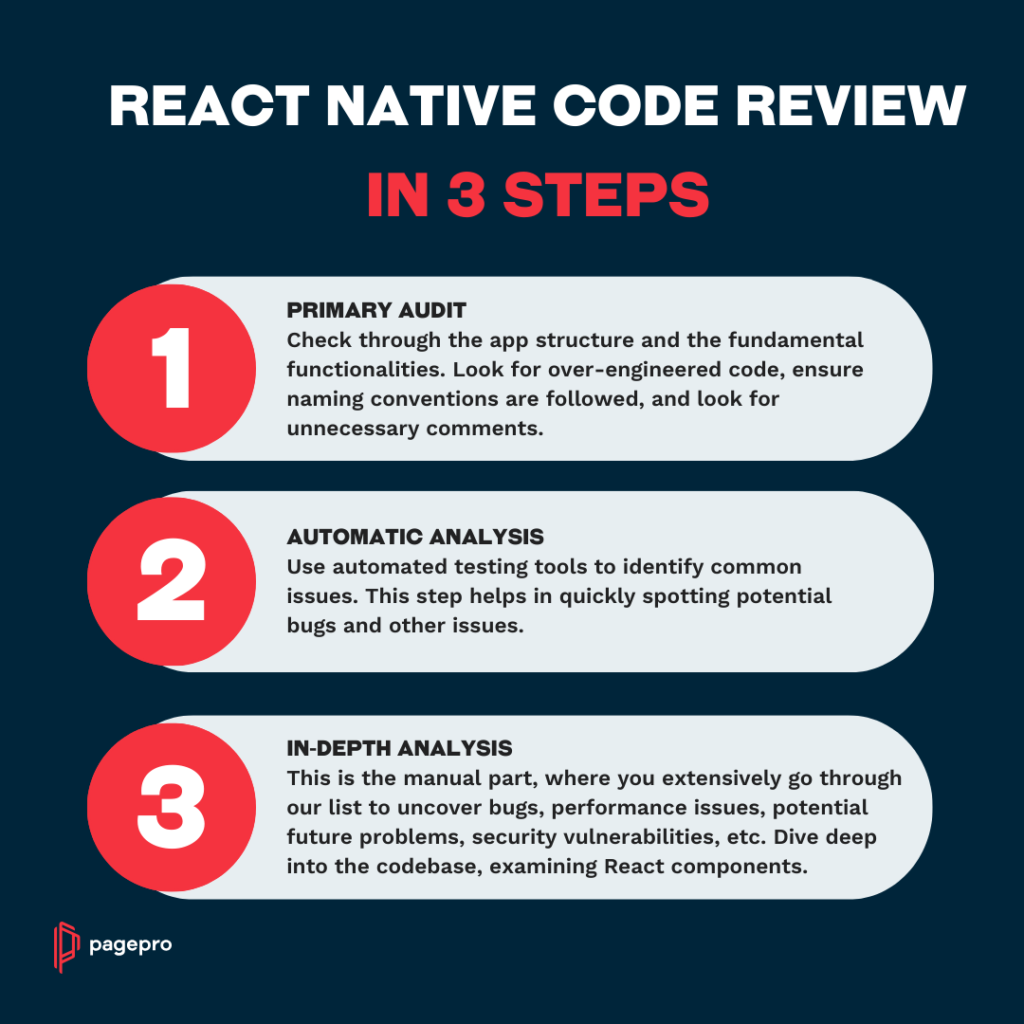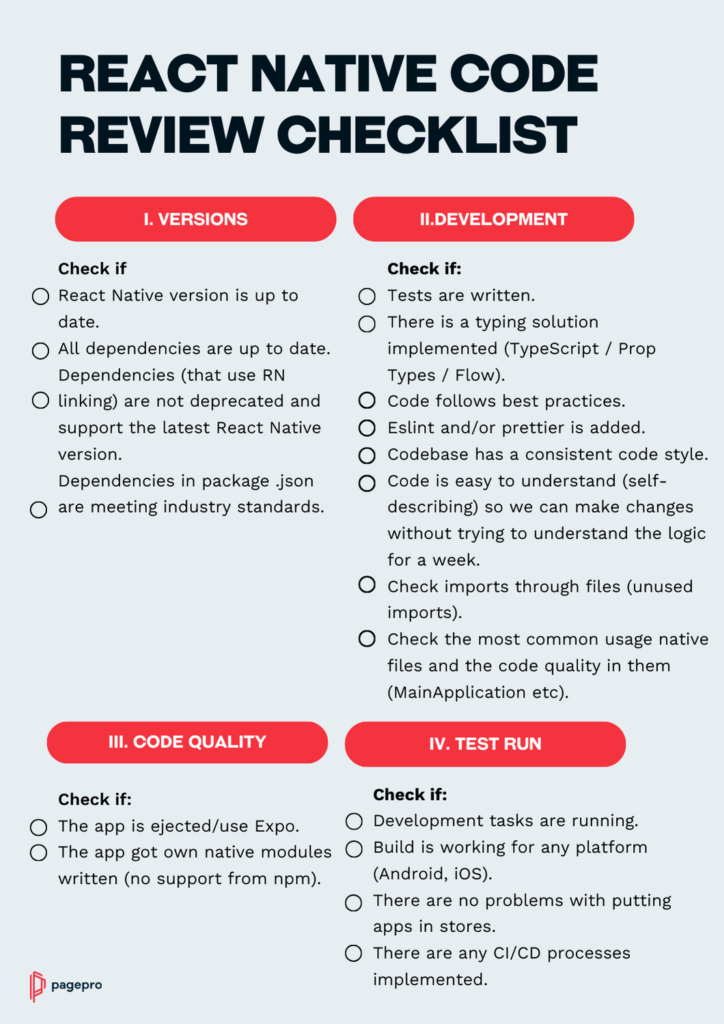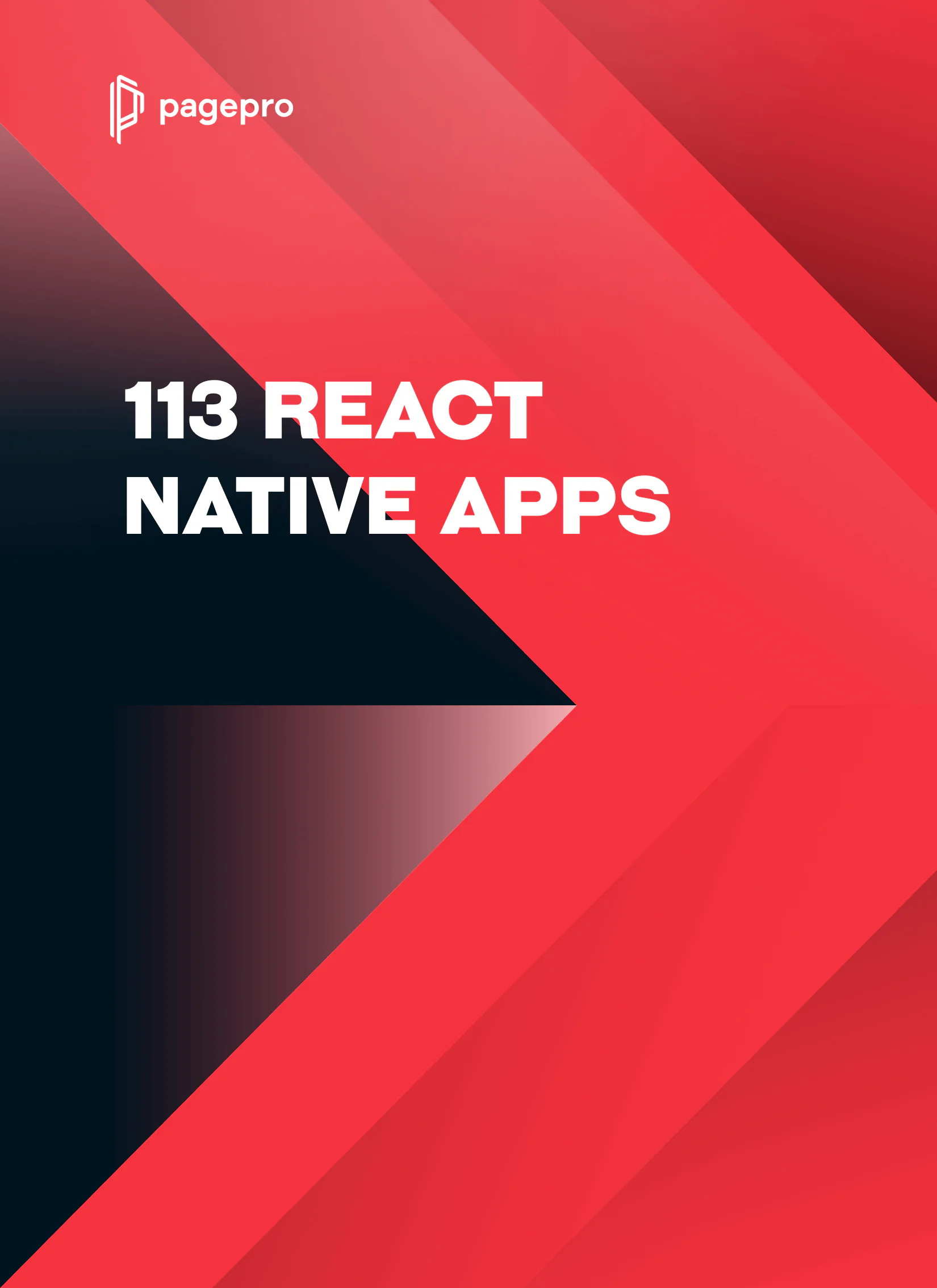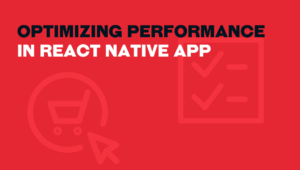How To Do a React Native Code Review – Checklist

Introduction
Among mobile apps, where user expectations and industry standards are constantly evolving, the importance of a React Native code review stands out. As React Native continues to dominate across cross-platform development frameworks, its apps are being adopted by businesses and developers worldwide.
With the increasing popularity of React Native apps, the challenge isn’t just about building functional apps anymore but it’s about ensuring top-notch code quality, maintainability, and performance. This ensures a seamless user experience but also simplifies the process for developers when it comes to scaling or updating the app in the future.
Recognizing this crucial need, we’ve crafted this guide. It aims to provide a complete checklist overview, supplemented with best practices and insights, to aid in conducting a thorough and successful React Native code review. Whether you’re an experienced developer or just starting, this guide offers valuable insights to advance the quality and reliability of your React Native projects.
What is Code Review?
A code review is an integral part of the development process. It is a form of a deep and profound analysis of the existing codebase, primarily aimed at identifying potential bugs, ensuring code quality, and maintaining a consistent coding standard across the project.
The primary objective is to ensure that the React code sticks to best practices, is free from unnecessary comments, and is written in a manner that promotes clarity and efficiency.
When Should I Do a React Native Code Review?
Different React Native Developers face different scenarios, but it doesn’t matter if:
- you just took over an application from a different developer, or
- someone asked you to improve the existing app, or
- you just built an app and want to make sure it’s flawless…
…you need to have a deep understanding of what’s inside and where the potential source of errors may be hidden.
And if you think about it, there may be many areas where code review will appear to be highly recommended, if not absolutely necessary.

Higher Performance
First of all, code review is extremely important when it comes to app performance.
While talking about React Native and cross-platform applications in general, their performance and user interface are considered sometimes the biggest challenge. The goal is to make the final experience native-like. Which means performance has to be outstanding.
And this is when the code review is a great idea, as it is able to uncover many flaws and areas of improvement.
Scale Easier
Planning your future app progress demands a deep understanding of its architecture, codebase and defining new features.
The analysis of fundamental app functionalities will help you plan how you can improve it later on.
Make Changes and Improvements
As you know it’s almost impossible to build and release a mobile or web application without a few changes here and there. React Native apps are no different.
Keeping a code review checklist on your sight makes it easier to keep your app in shape despite the changes you have made.
Identify Bugs Easier
Even if you went through and passed many different tests, it doesn’t really mean your app is totally ready to hit the market.
Unfortunately, many bugs are becoming visible only after a bit heavier usage by the final users.
Deep analysis of your code is able to spot them before they appear.
Detect Platform-based Functionalities
While building React Native applications, you will probably have things working on one platform (f.e. iOS), but not working on the other (Android).
Code audit helps you detect those “platform-based” features and functionalities, and fix them at an early stage.
Before The Final Release
React Native code review is also a great way (and quite obvious) for a “final checkup”.
Before the release you may want to check if all works fine, and if the code is following the latest development standards.
To sum it up, React Native code review may be helpful to:
- Find areas of improvement for your React Native apps performance
- Get a deep understanding of the application architecture to scale it easier
- Identify and uncover existing and potential bugs and problems
- Identify “platform-based” functionalities
- Keep your React app in shape despite constant changes
- Prepare your mobile applications to be released with no flaws
- Make sure your app is following the latest industry standards
Want to boost your app performance?
The React Native Code Review Process
If you want to do your code review well, I suggest starting with the following order:
- Primary audit – This involves a cursory examination of the React code. Check through the app structure and the fundamental functionalities. Look for over-engineered code, ensure naming conventions are followed, and look for unnecessary comments.
- Automatic analysis – Use automated testing tools to identify common issues. This step helps in quickly spotting potential bugs and other issues.
- In-depth analysis – This is the manual part, where you extensively go through our list to uncover bugs, performance issues, potential future problems, security vulnerabilities, etc. Dive deep into the codebase, examining React components.

React Native Code Review Checklist
Enough theory.
Let’s get to work. Here’s your React Native app Health Checklist, step-by-step:
1. Versions
Ensure the React Native version and dependencies are up-to-date.
Check if:
- React Native version is up to date.
- All dependencies are up to date.
- Dependencies (that use RN linking) are not deprecated and support the latest React Native version.
- Dependencies in package .json are meeting industry standards.
2. Development
Determine if the app uses Expo.
Check if:
- The app is ejected/use Expo.
- The app got own native modules written (no support from npm).
3. Code Quality:
Ensure tests are written and updated and adhere to best coding practices.
Check if:
- Tests are written.
- There is a typing solution implemented (TypeScript / Prop Types / Flow).
- Code follows best practices.
- Eslint and/or prettier is added.
- Codebase has a consistent code style.
- Code is easy to understand (self-describing) so we can make changes without trying to understand the logic for a week.
- Check imports through files (unused imports).
- Check the most common usage native files and the code quality in them (MainApplication etc).
4. Test Run
Ensure development tasks run smoothly.
Check if:
- Development tasks are running.
- Build is working for any platform (Android, iOS).
- There are no problems with putting apps in stores.
- There are any CI/CD processes implemented.

Summary
React Native Code Review may appear an important step in your app development process. It helps you understand the app taken over by another developer, helps you uncover potential problems and bugs, and finally, makes your app ready for the market.
If you do it well, you can save yourself tons of work, and will make your app work well for a long time.
Want to boost your app performance?




